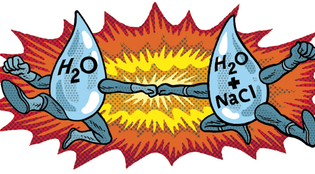 loading
loading
FindingsThe power of osmosisFinding news ways to produce electricity.  Gregory NemecView full image
There’s little that’s more certain than rivers flowing to the sea. What if that truth could become a major power source? A scientific process—pressure-retarded osmosis (PRO)—could make that happen, according to a recent study by Yale researchers. They found that the process could supply electricity to more than half a billion people by using just one-tenth of the earth’s flow of river water into the sea. PRO works by funneling river water and sea-water into side-by-side chambers separated by a special membrane. Since the salt content of seawater is greater than that of river water, the river water flows through the membrane into the seawater. The pressure generated by that flow spins a turbine, which creates electricity. “This is a form of renewable energy similar to solar energy or wind energy,” says Ngai Yin Yip ’11MPhil, an environmental engineering PhD student and coauthor of a study published in April in Environmental Science & Technology. It’s an old concept but hasn’t been widely used, says Yip, for lack of a membrane thin and porous enough. With that technology advancing, Yip and Yale environmental engineering professor Menachem Elimelech calculated the potential of pressure-retarded osmosis. Some questions remain, Yip says. Most notably, “How much of our river water would we be able to feasibly use without doing irreversible harm to the environment?”
The comment period has expired.
|
|